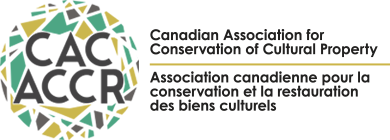J.CAC VOLUME 43 (2018)
Une étude des matériaux et techniques de Marc-Aurèle Fortin
A retrospective exhibition of the work of Marc-Aurèle Fortin organized by the Musée national des beaux-arts du Québec provided the opportunity to examine twenty-six paintings executed between 1918 and 1952, along with two artist’s paint boxes attributed to Fortin from the collection of the Montreal Museum of Fine Arts. Samples from the paintings and the paint tubes found in the boxes were analyzed by scanning electron microscopy/energy-dispersive X-ray spectrometry, X-ray diffraction, Fourier transform infrared spectroscopy, Raman spectroscopy, polarised light microscopy and gas chromatography-mass spectrometry. Data on supports, preparation layers, grey and black ground layers and paints are presented here. The painting supports are quite diverse and are sometimes unusual: canvas (linen or cotton), cardboard, wood, fibreboard, metal and linoleum were all identified. The use of poor quality supports is the main conservation problem for Fortin’s paintings, as they may have deteriorated over time or caused alterations to the paint layers. The canvas supports are usually covered with a ground layer, often white in colour, while the rigid supports are not usually prepared, except sometimes those made of cardboard. The composition of the grey and black ground layers, which are characteristic of Fortin, varies from one painting to another, indicating that Fortin did not follow a strict protocol or that he may have employed commercial materials of variable composition. His colours were obtained using a diverse palette: a total of thirty-seven pigments were identified in the twenty-six works studied. Apart from the black ground layers, the binder of which is an oil-modified alkyd resin, Fortin’s paints are mostly oil-based; in some of his later works he also employed casein paints.
Download: JCAC43 Corbeil et al.